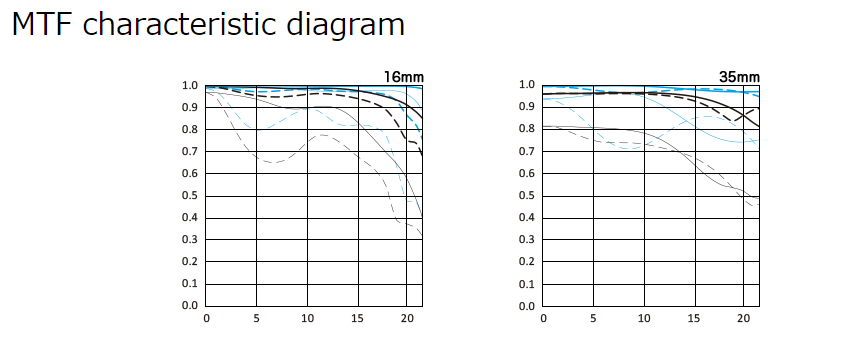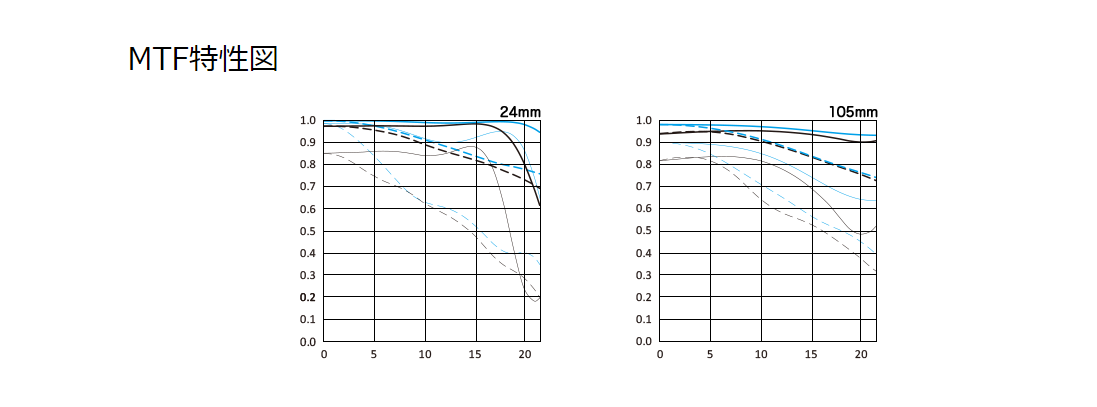Press release:
MELVILLE, N.Y., August 25, 2016 – Canon U.S.A., Inc., a leader in digital imaging solutions, is proud to announce the EOS 5D Mark IV DSLR camera, the next generation of the popular and versatile 5D series of Canon professional DSLR cameras. Building on this legendary legacy, the EOS 5D Mark IV propels the series forward with a fusion of features and enhancements targeted to please even the most discerning creative eyes. The camera’s 30.4 megapixel 35mm Full Frame Canon CMOS sensor offers stunning image quality while the DIGIC 6+ Image Processor delivers 4K 30P video and up to and seven frames per second (fps) continuous shooting. To make video shooting even easier, the camera also features Canon’s propriety Dual Pixel CMOS AF, even when shooting 4K to help ensure sharp focus and subject tracking.“Canon’s EOS 5D series of DSLR cameras has a history of being at the forefront of still and video innovation. And today, we add to this family of cameras the EOS 5D Mark IV– the first in our 5D series to offer 4K video and built-in Wi-Fi and NFC connectivity,” said Yuichi Ishizuka, president and COO, Canon U.S.A., Inc. “In developing this new DSLR camera, we listened to the requests of current EOS users to create for them a modern, versatile camera designed to help them create and share beautiful still and video imagery.”
“Outdoor photographers will really appreciate the new EOS 5D Mark IV, as it offers more resolution, better detail in the shadows, and improved speeds in autofocus and frame rate,” reported acclaimed nature photographer and Canon Explorer of Light George Lepp. “With the fabulous resolution of 4K video and the ability to make beautiful prints from a frame of that video as an added bonus, this camera sets a new mid-range standard for nature photography.”
In addition, Canon is also introducing two new L-series EF lenses – the Canon EF 16-35mm f/2.8L III USM Ultra-Wide Zoom Lens and EF 24-105mm f/4L IS II USM Standard Zoom Lens– offering fantastic edge-to-edge sharpness across the imaging plane, as well as improved durability and performance.
EOS 5D Mark IV DSLR Camera Specifications:
- New 30.4 Megapixel full-frame CMOS sensor for versatile shooting in nearly any light, with ISO range 100–32,000; expandable up to 50–102,400.
- 4K Motion JPEG video (DCI cinema-type 4096 x 2160) at 30p or 24p; in-camera still frame grab* of 4K 8.8-Megapixel images; multiple video options include Full HD up to 60p, and HD up to 120p.
- Superb Dual Pixel CMOS AF for responsive and smooth AF during video or Live View shooting; LCD monitor has full touch-screen interface, including selection of AF area.
- Excellent performance — up to 7.0 fps** continuous shooting speed with high performance DIGIC 6+ Image Processor for improved speed and excellent image quality.
- 61 AF points with expanded vertical coverage with 41 cross-points, and AF possible at all 61 AF points with many lens + extender combinations effective at f/8.
- 150,000-pixel RGB+IR metering sensor helps provide precise exposure metering, helps detect flickering lights and allows for enhanced scene recognition and face detection capabilities.
- Dual Pixel RAW***, in-camera Digital Lens Optimizer during JPEG shooting and Diffraction Correction technologies.
- Built-in Wi-Fi®1 and NFC2 connectivity provide easy sharing to compatible smart devices, select social media sites and the Canon Connect Station CS100 device.
- Built-in GPS3 provides geotag information including auto time syncing with Universal Time Code (UTC) via satellites.
“I have owned every camera in the 5D line, so the new EOS 5D Mark IV feels like an old friend in my hands, only better” exclaimed renowned wedding photographer and Canon Explorer of Light Clay Blackmore. “It has everything a professional photographer needs to create outstanding, quality images every time. Between its ability with still images and video capture, it is the complete package and—in my opinion—the best wedding camera on the planet.”
“When working with macro beauty photography, I need fast and precise autofocus. With each breath of the subject I need to be able to check the exact placement of focus, whether on the tips of the eyelashes, the pupils or other detail of her face. The EOS 5D Mark IV gave me exactly the speed and precision required to capture the detail and stunning color that is a signature of my beauty work,” remarked celebrated fashion and beauty photographer and Canon Explorer of Light Lindsay Adler. “I’m always looking for ways to create visuals that help me stand out from the competition. Cinemagraphs, also known as ‘living images,’ allow me to combine still frames and video to create captivating images. Because of the EOS 5D Mark IV’s 4K and slow motion capabilities, I now have the ability to create high quality and visually compelling cinemagraphs without having to invest in an expensive cinema camera!”
The Next Generation of EOS 5D Cameras
In addition to the new Full Frame sensor, the new EOS 5D Mark IV includes a 61-point High-Density Reticular AF II system, similar to the one found in the flagship EOS-1D X Mark II, with all AF points selectable by the user (and up to 41 cross-type points depending on the lens in use). The AF system, improved over previous Canon 5D series models, includes expanded coverage across the frame that supports AF at maximum apertures up to f/8 with all 61 points for high-precision autofocus even when using EF super-telephoto lenses with an EF extender. Standard ISO range for the EOS 5D Mark IV is ISO 100-32,000 and is expandable to 50-102,400.
The EOS 5D Mark IV also introduces a new 150,000 pixel RGB+IR metering sensor with enhanced precision and performance compared to its predecessor, improving upon facial recognition and tracking as well as nature and sports scenes with fast-moving action. AF sensitivity in low light is EV-3 and EV-4 when in Live View mode. The EOS Scene Detection System can detect and compensate for flickering light sources that are often used in gymnasiums and swimming pools. When enabled, this anti-flicker system automatically adjusts shutter release timing to help reduce disparities in exposure and color especially during continuous burst shooting.
Following the groundbreaking video recording capabilities introduced in the EOS 5D Mark II and EOS 5D Mark III, the EOS 5D Mark IV takes the next leap forward offering DCI 4K video recording. Adding to the versatility of capturing 4K video, is Canon’s Dual Pixel CMOS AF. This proven autofocus system allows for continuous focus tracking of subjects, and can be customized by the user for optimal performance. Dual Pixel CMOS AF technology not only enhances 4K video recording, but also helps create crisp focus for 4K Frame Grab extraction of 8.8 megapixel still JPEG images, all done in camera.
Mobile Connectivity
For the first time in an EOS 5D series DSLR camera, the EOS 5D Mark IV features built-in Wi-Fi®1 and Near-Field Communication (NFC)™1 providing for the easy transfer of images and MP4 movies to compatible mobile devices, as well remote shooting when using the Canon Camera Connect App2. The EOS 5D Mark IV also includes a built-in GPS3 receiver with compass for precise geo-tagged information of latitude, longitude, and elevation. This is especially valuable to wildlife photographers and photojournalists who need to track their locations, as well as providing sports and wedding photographers the ability to sync a multiple-camera setup with extreme accuracy and precision. The camera’s built-in GPS can also be used to sync the camera’s time to the atomic clock, an invaluable feature when multiple photographers are covering the same event.
Pricing and Availability
The Canon EOS 5D Mark IV DSLR is currently scheduled to be available in early September 2016 for an estimated retail price of $3,499.00 for the body only††. It will also be sold as part of body-and-lens kits with the EF24-70mm f/4L lens ($4,399.00, scheduled to be available early September) †† and the EF24-105mm f/4L IS II USM lens ($4599.00, scheduled to be available late October) ††.
For an exclusive, hands-on preview, the camera will be available at the customer support centers shown below. Visitors can experience the camera firsthand while Canon technical experts demonstrate new product features, answer questions, and spotlight the benefits of Canon products and service.
- Canon Customer Care Center, Melville, NY – Monday, August 29, 11am-2pm https://www.regonline.com/CLLLI16_August29
- Canon Experience Center, Costa Mesa, CA – Tuesday, August 30, 7pm-9pm https://www.regonline.com/CEC16_August30
- Canon Professional Service & Support Center, Itasca, IL – Friday, September 2, 11am-2pmhttps://www.regonline.com/ItascaSeptember2016
New Canon EF Lenses and EOS Accessories
In addition to the new EOS 5D Mark IV DSLR, Canon is also introducing two EF-Series L-series lenses as well as a variety of EOS accessories. The new EF 16-35mm f/2.8L III USM Ultra-Wide Zoom Lens features a large diameter GMO dual surface aspherical lens and ground aspherical lens, f/2.8 aperture throughout the entire zoom range, fluorine coating, improved durability and is dust and water resistant. The new EF 24-105mm f/4L IS II USM Standard Zoom lens features an improved four-stop image stabilization as well as ghosting and flare reduction with air sphere coating. The Canon EF 16-35mm f/2.8L III USM Ultra-Wide Zoom Lens is scheduled to be available late in October for an estimated retail price of $2,199.00†† and the EF 24-105mm f/4L IS II USM Standard Zoom Lens is scheduled to be available in late October for an estimated retail price of $1,099.00††.
Additional EOS accessories include the Canon Battery Grip BG-E20, Canon Rain Cover ERC-E5S/E5M/E5L and Canon Protecting Cloth PC-E1.
For more information about all these products and accessories, please visit: https://www.usa.canon.com/5D4Legend
† Based on weekly patent counts issued by United States Patent and Trademark Office.
1 Compatible with iOS® versions 7.1/8.4/9.0, AndroidTM smartphone and tablet versions 4.0/4.1/4.2/4.3/4.4/5.0/5.1. Data charges may apply with the download of the free Canon Camera Connect app. This app helps enable you to upload images to social media services. Please note that image files may contain personally identifiable information that may implicate privacy laws. Canon disclaims and has no responsibility for your use of such images. Canon does not obtain, collect or use such images or any information included in such images through this app.
2 Data charges may apply with the download of the free Canon Camera Connect app. This app helps enable you to upload images to social media services. Please note that image files may contain personally identifiable information that may implicate privacy laws. Canon disclaims and has no responsibility for your use of such images. Canon does not obtain, collect or use such images or any information included in such images through this app.
3 In certain countries and regions, the use of GPS may be restricted. Therefore be sure to use GPS in accordance with the laws and regulations of your country or region. Be particularly careful when traveling outside your home country. As a signal is received from GPS satellites, take sufficient measures when using in locations where the use of electronics is regulated.
* Saving a still image from a single movie frame does not result in the same image quality as a normal still image.
** Continuous shooting speed may vary depending on the shutter speed, the aperture, the lens being used, the battery charge and various camera settings.
*** When lens diaphragm setting is fully open, adjustment volume and compensation effect are emphasized. Sufficient adjustment volume and compensation effect may not be achieved, depending on lens in use and shooting conditions. Adjustment volume and compensation effect vary depending on camera position (landscape or portrait). Sufficient adjustment volume and compensation effect may not be achieved depending on the shooting conditions.
††Availability, prices and specifications are subject to change without notice. Actual prices are set by individual dealers and may vary.




 Reply With Quote
Reply With Quote




